Sustainability, Governance, and Methods

...by Ivo Ponocny
On March 20th, the United Nations celebrate the International Day of Happiness again. But it is a sad webpage which they provide this year, reminding of the situation in Ukraine, Yemen, Gaza, and “elsewhere”. They start with:
March 20th is the UN International Day of Happiness. With our world facing unprecedented challenges, wellbeing matters more than ever.
“More than ever” – and it is proposed to share positive messages, connect with people, and give directly.
It is hard talking about happiness these days, it would be much easier to talk about unhappiness. And yes, sometimes being unhappy is the proper reaction. Confronted with human tragedies, it is appropriate to feel angry, embarrassed, ashamed, disappointed, and so on. All these emotions have their biological meaning, to a certain extent even hatred, envy, and aggression, for the simple reason that they can provoke actions for which we would not have sufficient drive, otherwise – for example the drive to raise our voice where appropriate. (You see when you are considering writing a complaint: If you don’t write it being still in rage, you will most likely not do so later on.) The Pixar movie “Inside Out” (the one with the personified emotions) illustrates the importance of negative emotions in a very beautiful way: It needs sadness to react properly on sad issues.
This is where the natural realm of many positive psychology exercises ends: The recommendation how to react on a war cannot be to see things more positively, losing a dear relative is not a good occasion for gratification exercises, and the experience of violence is not likely to be compensated by post-traumatic growth. Sometimes what happens is so terrible that showing any kind of happiness simply looks indecent. There is an often expressed criticism of the positive psychology movement: If you focus on just reframing your view of the world, you will not change the world to a better one. And you cannot expect any person in any situation to feel good, if they just try hard enough.
On the other hand, thoughts like this are dangerous as well, since there is always some evil around us, and always reason for unhappiness. Even if the current events are overcome, climate change alone would be cause enough for being depressed for the whole rest of our lives. But constantly feeling bad for empathy cannot be a moral claim, either. We need a certain amount of happiness in the long run, otherwise we could not be resilient against stressors. As usual, a proper balance between the extremes is crucial. The challenge is to find for oneself what this appropriate balance is. In particular when we are helpless observers of a human disaster.
I agree that wellbeing matters more than ever. We must not destroy wellbeing, never – for its own sake, and since truly happy people have no interest in wars, after all.
So let us express our empathy for all victims of violence, and hope that it will be easier to talk about happiness on the next happiness day.
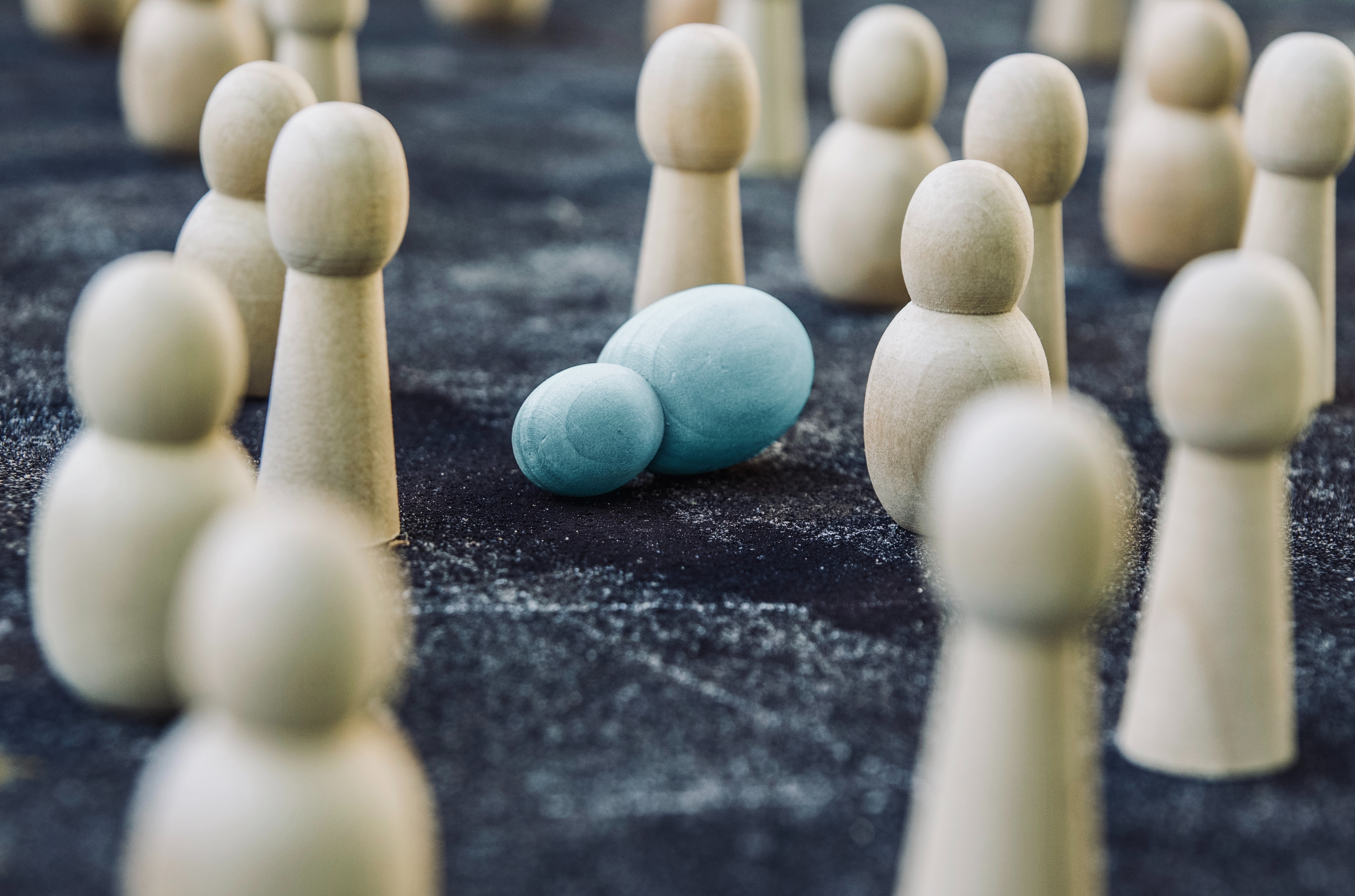
John F. Kennedy: “And with privilege goes responsibility.” (Speech at Amherst College, 26 October 1963)
Starting this blog on the Human Rights Day, annually celebrated on December 10th, with a quote including terms like “privileges” seems somewhat misleading. However, one needs to take the idea of the United Nations General Assembly specified in the Universal Declaration of Human Rights (UDHR) in 1948 into consideration, “All human beings are born free and equal in dignity and rights.” Easy to understand, but unfortunately far away from realization, especially when we take this year’s focus of “Equality” into consideration. Equality here means, equality in terms of race, ethnic background, gender, sexual orientation, religion, age, disability…. The list is endless, but how can we reach this state of a discrimination free world, or at least take a step into this direction?
In my opinion, Christian Weismayer, advantaged groups with special privileges need to support the disadvantaged. When we look around the borders of our self-created reality, any group we belong to, the country in which we live, or on a wider scale some union we belong to, this is more important than ever and brought to our attention day by day, be it just a short human interaction, or broader political agendas communicated through a broad variety of media. Getting rid of discrimination in any sense can just be achieved with the support of everyone, and especially privileged societies must be held accountable here. So please let me invite everyone to open our eyes together and search for our personal contribution. Don’t be frightened by sticks and stones along this path. Most often it is just the fear of losing one’s face. But be aware that even minor contributions, from my point of view should start first with the most basic effort, namely respect for others, will lead to major improvements for all of us (not just “the others”)!
Let’s finally close this intro by a motivating quote by Albert Einstein: “One should not pursue goals that are easily achieved. One must develop an instinct for what one can just barely achieve through one’s greatest efforts.”
For me, Sabine Sedlacek, human rights in the context of individual and collective behavior seems to be an interesting topic in a world full of individualists. If everyone seeks for a maximum of freedom of action, we might at the end overlook that our individual action is also at risk to be limited. Therefore, mutual understanding of each other's needs and wants is needed in order to safeguard our collective wellbeing. But how are we able to mutually understand each other if we do not respect different opinions.
Let me, Ivo Ponocny, adopt these thoughts. The first right we perceive as violated is usually our own, long before we bother about the rights of others. We immediately feel any restriction in our behavioral options, we immediately show the resistance which is called “reactance” in social psychology, and we angrily shout alarm. This includes, unfortunately, also the following: We see dictatorship when we are urged to consume less or just in a wiser way, asked not to waste resources, reminded not to use depreciative wording, and blamed for not respecting those we consider as not our own kind. This is where we start to claim human rights. Even if our “right” to keep our way of life is inconsistent with other rights, for example to others’ intact livelihood.
But this is not why human rights have been formulated. When they say “freedom”, they do not mean freedom from moral consideration, nor the freedom to spread stereotypes, not the freedom to invent alternative truths, not the freedom to lie, not the freedom to be inconsiderate, and definitely neither the freedom to ignore other people’s safety nor their freedom itself.
Let me turn around a well-known quote and say: Sometimes we should be more aware of the bit of wood in the other’s eye, before worrying about the grain of dust in our own. The best rights are those which preserve something good. We should not, of all things, just insist on those which don’t.
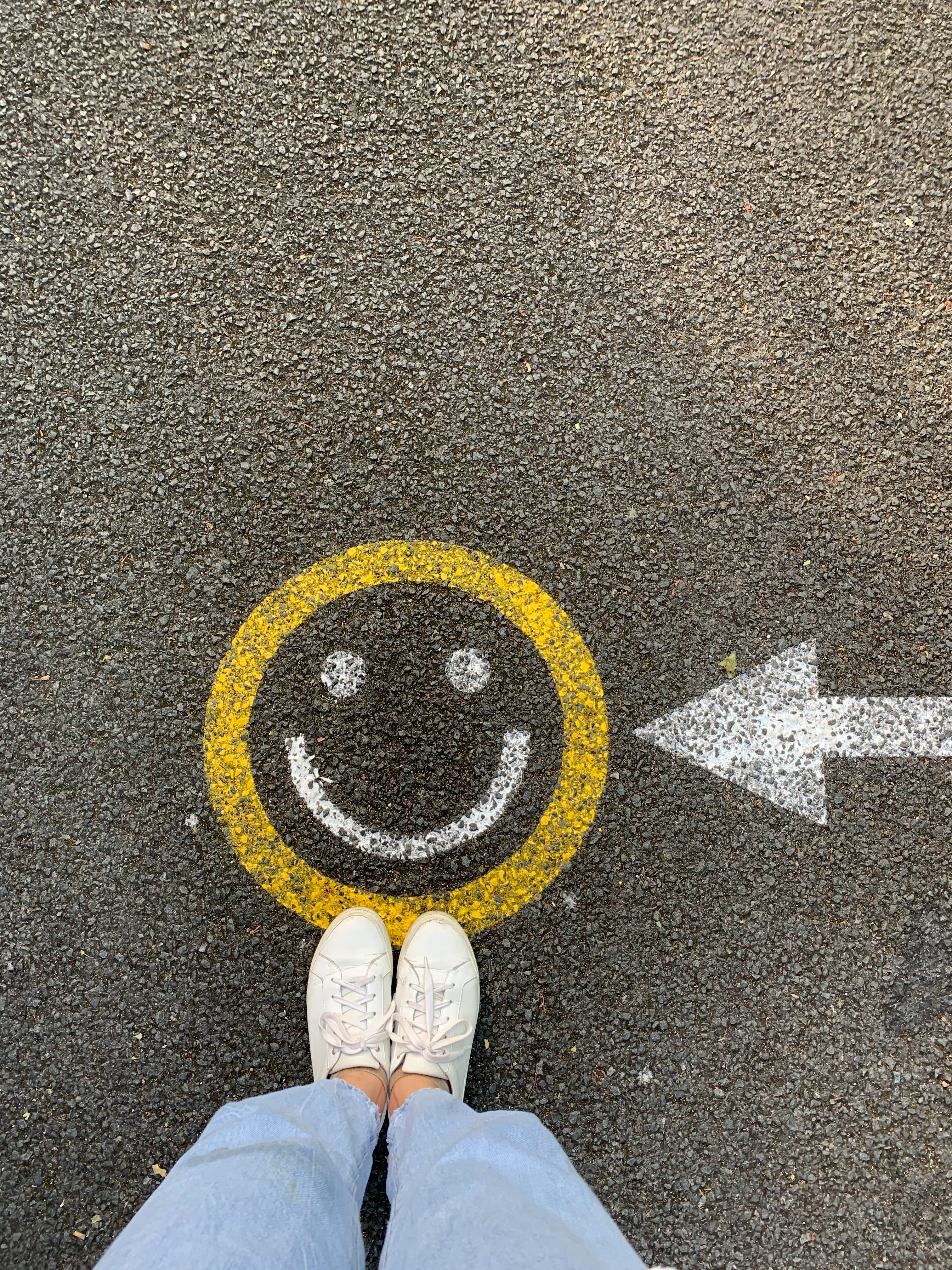
...by Professor Ivo Ponocny
Keep calm. Stay wise. Be kind. This is found on the official webpage of UN’s International Day of Happiness (https://www.dayofhappiness.net/#new), celebrated since 2013.
Celebrated? I have seen more enthusiasm regarding minor topics. In times of crisis, we are fighting for other goals, for our mere existence, our health, our economic survival, our basic social needs, our freedom to travel, for pushing away the burden rather than to build up bliss. We are less fighting for happiness than against mischief, which is much less attractive.
Is happiness a luxury issue, after all? Many people belief so, they do not consider too relevant how people feel, or even how they feel for themselves. To them, functioning is more important than happiness, functioning well gives you the option – Sen would say the “capability” – to achieve happiness. This is what we can see: whether we have achieved the prerequisites needed for living a “good” life. (Kant even goes that far to say to get worthy of happiness is more important than actually being happy.) If the living standard is sufficient to make people happy, then society has fulfilled its duty, then it’s everybody’s choice to make use of all these offers, or not. But this is not a public concern any more.
Well, what about you? Do you want to be happy? Or is it ok for you to be unhappy, as long as you could be happy if you just made better use of your options? At that place, economic and psychological reasoning may come to different conclusions, the former typically focusing on choice utility (the utility we predict), the latter on actually experienced utility (the emotional benefit we really get at the end). Experienced utility is more difficult to observe than choices, but at the end decisive for the emotional quality of our lives.
A crisis forces us to concentrate on the tangible prerequisites of good lives. And a crisis forces us to adapt and open our minds for new perspectives. We have learned about home office and about virtual meetings, even virtual lectures, we have learned that parts of our CO2 emissions are fully dispensable – on the other hand we have learned about the importance of social contacts, of cultural activities, communication, social cohesion, resilience and solidarity.
Let us hope that a post-crisis economy will consider the tangible as well as the intangible components of wellbeing. This is of what the International Day of Happiness should remind us.
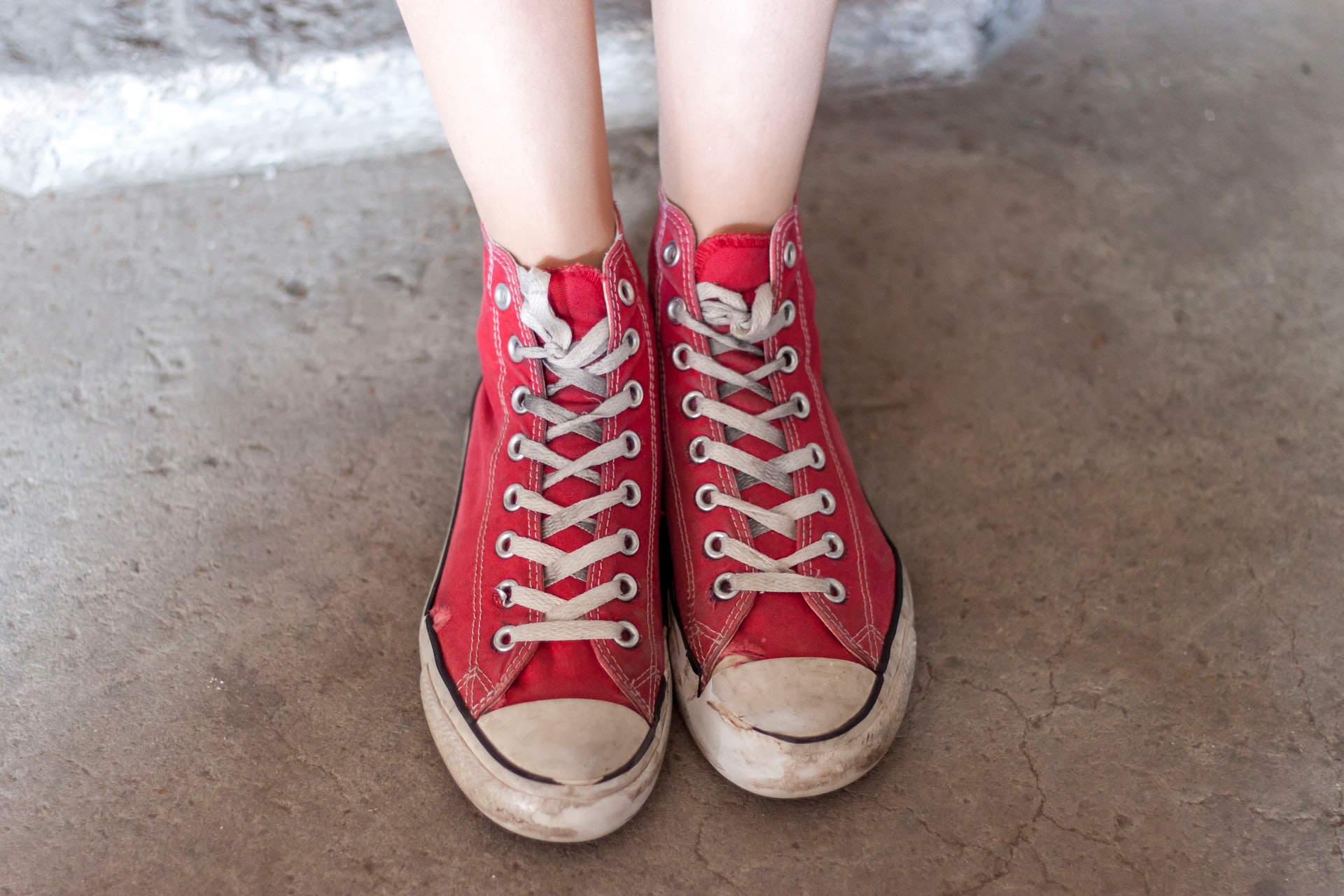
...by Dr. Gunther Maier
After at least 3000 years of existence, in 2020 mathematics finally got its own day. UNESCO declared March 14th the “international day of mathematics” and this year we celebrate it for the second time; and for the second time in a pandemic. Because of Corona, there will be no large gatherings and no frisky parties celebrating this event – despite the fact that mathematics has hugely helped us through this period. All our communication in home-office, home schooling, and distance learning is just numbers flying around. One could neither develop a vaccine nor validate it without sophisticated math. And predictions of the future development of this pandemic are much more reliable when based on mathematics than on the traditional methods of looking up to the stars or down at the intestines of some ritually slaughtered animal.
We do not know exactly when and where it all started. Probably, when hunters and gatherers settled down, they had to count how many goats there were in their herd and how much land they could cultivate. The earliest written accounts of numbers and mathematics are from Mesopotamia and Egypt almost 4,000 years ago. In these early centuries, mathematical knowledge was derived from regularities in observations. Mathematics in the modern sense started with the ancient Greeks, more specifically with Pythagoras and his followers in the sixth century BC. Instead of approaching issues inductively, they stated axioms and derived results therefrom by logic. Rigor and proof became the tools of choice for mathematicians. Greek mathematics culminated in the work of Euclid of Alexandria. His book, Elements, is a vast collection of mathematical definitions, theorems, and rigorous proofs. Until today, Euclid’s Elements is considered the most successful and influential textbook in history.
The ancient Greeks were obsessed with geometry and with numbers. Their obsession led to questions and answers that are still highly regarded today. By trying to square the circle – finding a square with exactly the same area as a given circle – they discovered Pi and calculated it to the first two decimal digits: 3.14. That is why March 14th is “Pi-day” and was declared the international day of mathematics. Today we know that Pi is a transcendental number – it has an infinite number of digits that never repeat – and therefore squaring the circle is futile. However, we cannot just discard Pi. It pops up in almost every area of contemporary mathematics; from number theory and Riemann’s zeta function to the Mandelbrot set of chaos theory. Over centuries, calculating the digits of Pi has been a challenge for mathematicians. Nowadays, it is a challenge for computers and programmers. As of January 2020, the record is 50 Trillion digits. This should be sufficient for most practical applications; in particular when we take into account that 39 digits of Pi is the precision needed to calculate the circumference of the known universe to within the width of a hydrogen atom[1].
The ancient Greeks were also obsessed with prime numbers – numbers that can only be factored by one and the number itself. They probably found out about primes when calculating the size of plots of land and by trying to arrange a set of squares into rectangles. Then they wanted to know how many such numbers there are and whether there is a largest prime. In one of the most beautiful proofs in mathematics, Euclid showed that there is no maximum prime and, therefore, that there must be infinitely many prime numbers. The proof is also easy to understand: Suppose there were a maximum prime number. Then, we can always find a larger prime by multiplying all the prime numbers up to this “maximum” and adding one. This new number must be prime because when we divide it by one of the known primes there will always be a remainder of one. Take the first three primes – 2, 3, 5 – for example. Five cannot be the maximum prime number because we can calculate a larger prime as 2*3*5+1 = 31.
This simple way to calculate a larger prime does not mean that mathematicians know a formula to calculate primes. Even after 2600 years of quest, they do not. And this is quite fortunate. With an easy way to calculate primes, all our approaches to securely transferring messages, orders, and money over the Internet would collapse immediately.
Mathematics is not just complicated and tedious. It can also be beautiful and fun. Since beauty and fun are often hidden, it needs experts to bring them to the surface. One of the best in this profession is Burkard Polster, a German working as an associate professor of mathematics at Monash University in Melbourne, Australia. In his YouTube channel, Mathologer[2], he makes many mathematical concepts and discoveries intuitively clear to non-mathematicians. For example, he demonstrates that Euler’s identity (eπi= -1) is indeed correct[3]. Now and then, his videos also show that important mathematical insights hide in everyday activities like juggling[4] or tying shoelaces[5,6]. Mathematics is really everywhere.
[1] https://www.youtube.com/watch?v=FpyrF_Ci2TQ
[2] https://www.youtube.com/channel/UC1_uAIS3r8Vu6JjXWvastJg
[3] https://www.youtube.com/watch?v=-dhHrg-KbJ0&t=249s
[4] https://www.youtube.com/watch?v=VsQ-OPIZ5kg

...by Dr. Gunther Maier
The Slovak government did it two weeks ago, the Austrian government plans to do the same in December: screening a large part of the population for Covid-19 infections. Of course, this is expensive and a major logistic and organizational challenge and the question is: Will the results justify all this? The answer depends in part on how reliably this strategy can identify infections, how likely spreaders may slip through and what is the risk that perfectly healthy people are sent into quarantine. Whether the costs exceed the benefits depends upon the weights we assign to these possible outcomes. It is therefore a political decision and beyond the realm of science.
Science can answer, however, the question of how reliable mass screenings are. The answer is somewhat sobering: Under reasonable assumptions, the chance that an individual who tests positive in the mass screening is really infected may only be about 25%. In three of every four “cases”, the tested person will not be infected – despite the positive Corona test. The basis for this result is basic probability theory. More specifically, it results from the work of Thomas Bayes, an 18th century English statistician, philosopher and Presbyterian pastor, who laid the basis for what we now call “Bayes’ theorem”. I short, the theorem implies that “given someone is infected, what is the chance that a Corona test is positive” and “given a person tested positively for Corona, what is the chance that person is infected” are two different things and may yeald very different results.
The reason for the above mentioned numbers is that, on the one hand, medical tests are not 100% perfect and, on the other hand, in a random sample of the population the overwhelming number will not be infected. These two mechanisms together make the outcomes of mass screenings potentially quite unreliable.
In addition to the correct result, every medical test may produce two erroneous outcomes. “False negatives” are cases where the test is negative although the person is infected. “False positives” are cases where the test indicates an infection although the person is not infected. These are important parameters of medical tests. Different numbers are available from different sources and for different Corona tests. Because of the health implications of undetected spreaders of the virus, the chance for “false negatives” receives more attention in medical science and one tries to keep that percentage low. For our argument, however, the risk of “false positives” is more important.
For my above-mentioned result I use the following numbers, which characterize a very reliable Corona test and are supported by literature:
- Percentage of infections in the population: 1%
- Percentage of false negatives: 1%
- Percentage of false positives: 3%
Suppose in our mass screening we test 100,000 people randomly drawn from the population. The actual number is not relevant; 100,000 just allows for easy calculations. In that test population we will have 1,000 infected people (100,000*1%). 990 of them (1,000*99%) will produce a positive Corona test, while 10 (false negatives; 1,000*1%) will not. Of the 99,000 not infected in our population, 2,970 will produce a positive test (false positives; 99,000*3%), while for 96,030 of them the test will be (correctly) negative.
When we look at the 3,960 cases with a positive Corona test (990 + 2.970), only 25% will actually be infected (990/3.960). Three quarters of our positively tested participants (2.970/3,960) are not infected and may be sent to quarantine although they are perfectly healthy.
Does this argument invalidate all Corona testing? Definitely not. When we concentrate the testing on suspected cases, the percentage of infections in the (tested) population is much higher. You can do the numbers yourself. Try out community infection rates of 25%, 50% and 75%. You will see that the influence of the false positives declines with higher percentages. Even in the case of 25%, you will find that 92% of the positively tested are really infected.
There are a number of additional problems with mass screenings currently discussed in politics and in the media. But, sometimes even very basic 18th century probability theory can be useful for making reasonable decisions.

...by Dr. Gunther Maier
In a previous blog entry, I have discussed how the Internet in general and the World-Wide-Web in particular has completely changed the business of academic publishing. In this earlier blog entry, I concentrated on journal articles and on the different modes of academic journals that developed in response to digitalization. “What about books?” you may ask. Did you not mention books because that segment of publishing is not affected by these mechanisms?
Not at all. To some extent, publishing of books is even more vulnerable to digitalization than journal publishing. The process just has not advanced that far yet. The only reason why I did not discuss this in my earlier blog is that I did not want to confuse matters by squeezing both into one blog entry. I wanted to deal with books publishing in a separate blog entry; in this blog entry.
Publishers of books face the same challenges as journal publishers. Just like articles, book manuscripts can be uploaded to a server and made available for download via the Internet. However, open access published books are much less popular than journal articles. There are probably a number of reasons why this is the case. Books have more pages than journal articles. Therefore, PDF-files for whole books are larger and less easily handled than article files. Academic books are wider in scope and therefore readers like to jump to different parts of the text, which is easier in printed books. In addition, many colleagues simply prefer to hold a book in their hands and to put it in a bookshelf.
Printed academic books are probably less at risk of becoming extinct than printed academic journals. However, this does not mean that the publishers of academic books are on the safe side of digitalization. Because in the recent years digitalization has also revolutionized the production process for printed books. Traditional printing methods are characterized by substantial fixed costs related to the handling of printing plates. These plates, which each hold a limited number of pages, have to be set up, mounted into the printing press, and dismounted to allow for the printing of the next set of pages. Traditional printing of books requires a certain minimum quantity to be able to spread the fixed costs and reach an acceptable price per copy. This is the reason why books that serve a niche market like academic literature and do not sell in large quantities, are quite expensive.
In recent years, digital printing methods have improved substantially and gained market shares. In 2015, a study estimated the share of digital printing on total printing worldwide at 12 percent and expected it to grow to over 20% by 2018. These technologies, which are similar to the laser and ink-jet printers we have in our offices, get the content directly from the computer and do not require printing plates. This eliminates the fixed costs of traditional printing and makes the technology very attractive for small editions; even down to just one copy. Some printing companies have started to use this technology to turn the printing process upside-down. They offer “book-on-demand” deals where the book not printed and then sold, but first sold and then printed. Currently, these companies make most of their money with photo-books and self-published novels of wannabe-writers.
In academic publishing, the potential is huge. The technology allows innovative universities and scholarly organizations to start their own publishing press. Since there is no stock of printed copies, the risk is minimal. Printing only starts when the book is sold. The printer also ships your book to the customer, collects the payment and passes the royalty along to you. When you register for ISBN and observe some minimum standards, you can also get your book into the distribution channels of all the online bookstores. The total cost of publishing a book via book-on-demand, digital printing, and online booksellers is relatively small – far below the usual price of comparable academic books.
Let me illustrate this with an example. At the open access journal REGION, where I serve as technical director, we decided to publish a special issue as a print-on-demand book. The book is 240 black and white pages, A4 format with paperback binding. The fee we had to pay for setup and for international distribution was approximately € 30. You can buy the book directly from the printer for €22.99. Via Amazon the book is available worldwide. But, also most other large online bookstores offer it. Try it out. Just search for “Quality and Inequality in Regional and Urban Systems” edited by Karima Kourtit, Peter Nijkamp and Roger Stough. In addition to Amazon, I found the book at Thalia, Hugendubel, Waterstones and Barnes & Noble.
When universities realize that with these technologies and distribution channels, they can get books at much lower costs than what their libraries have to pay and with very low risk, they will take over publishing of academic books from the publishing companies. In addition, this technology will allow them to produce textbooks tailor made for their classes and update them as the content of a course develops. Digitalization is impacting all parts of academic life; also the publishing of academic books.s

...by Dr. Gunther Maier
Sir Tim Berners-Lee and the business of academic publishing
In 1989, the English engineer and computer scientist at the European physics center CERN had an idea. He wrote it up and his manager found it “vague, but exciting”. Berners-Lee combined existing ideas and technologies, defined a protocol, and thus created the World-Wide-Web. Today, his invention can be found almost everywhere in the world, and for many people the World-Wide-Web is synonymous for the Internet.
With his idea, Tim Berners-Lee changed many different aspects of our lives. He changed communication, politics, media, banking, tourism, and many more. Important for us, he also changed how universities operate as well as how academic publishing works. It is the latter that I want to discuss briefly in this blog entry.
Traditional academic publishing
Academic publishing happens overwhelmingly through books and academic journal. Traditionally, there is a clear division of labor between academia and publishing companies when it comes to publishing books and academic journals. The content comes from academia; the publishing companies do physical production and management. Submitted manuscripts, of course, come from academia. Academics also serve as editors and as reviewers who together organize and implement peer reviewing, the standard quality control mechanism of scholarly communication. Once an article is accepted by the journal – more specifically the reviewers and the editor – in traditional academic publishing it is transferred into the domain of the publishing company. That company then does typesetting, printing, binding, shipping, and manages subscriptions and subscriber’s payments. Most of the traditionally produced and printed journal volumes were sent to academic libraries, the most important customers of the publishing companies.
For large publishing companies like Elsevier, Springer, Wiley, etc. academic publishing is a very lucrative business. According to The Economist 30-40% of turnover made in academic publishing ends up in profits. One reason for that is the traditional share how the revenue is divided between publishing companies and academia: publishing companies get 100%, academia the rest.
Open Access Journals
The development of the Internet in general and of Tim Berners-Lee’s World-Wide-Web in particular dramatically changed the business environment of academic publishing. University libraries and their customers requested to get the journal articles also in electronic format in addition to the print version. It is much easier to download a PDF-file from the server of the library or from the publishing company than to go to the library, check out the respective volume of the journal and run the article through the copy machine. Also, the publishing companies found this change profitable so that nowadays only a small percentage of academic journals is still produced in print version. Switching to online only eliminates the costs of printing, binding, and shipping.
Looking at this new situation, many academics began to question the traditional division of labor. “We write the articles, do the editing and reviewing, and know how to put documents on a server”, they argued. “Do we need the publishing companies? Can’t we just manage the academic journals ourselves?” Additionally, the subscription fees for journals were perceived as a “Pay Wall” that locks out potential readers, especially those in low income countries, and limits the distribution of scientific knowledge. The “Open Access Movement” proclaimed that scientific knowledge should be available for free to everybody and found substantial support in the academic community. Currently, the “Directory of Open Access Journals” lists 14.712 academic journals that provide free access to the articles they publish.
The request for open access became so strong that even the publishing companies had to adjust their business model. They also began offering open access options. Since they did not want to give up this profitable business, instead of the reader they charged the author of the article. Authors faced “Article Processing Charges” (APCs) from five-hundred to a few thousand Euro per article they wanted to publish.
Predatory Journals
This “innovative” business model on the one hand raised concerns about the objectivity of the peer-review process of such journals, and on the other hand attracted new entrants to the market. “Predatory” journals and “predatory” publishers saw the opportunity to earn a lot from APCs and keep costs low. They promise fast publication, which is only feasible since they reduce peer-review to a minimum or eliminate it all together. The quality of such journals is of course very questionable. The reputation of a publication there is close to zero. In cases like job-applications, it can even turn negative because academia generally considers engaging with a journal where one can “buy” a publication unethically. Because of their low quality, the existence of predatory journals also jeopardizes the reputation and integrity of science in general.
Charge the Public
One recent development in academic publishing are contracts between the large publishing companies and university libraries – or consortia of such institutions – that cover also APCs for open access published articles by faculty members from this university. This arrangement has advantages. Library consortia, of course, have more bargaining power than individual scientists have and can therefore negotiate better deals. In addition, authors get their APCs covered by their institutions. On the other hand, the arrangement raises severe agency issues. Authors have no incentive to select a journal that charges lower APCs. The publishing companies feel no pressure to keep APCs low since these are covered anyways. Such deals also threaten smaller commercial publishers who find it harder to negotiate individual deals with library consortia. In the end, it is again the public who pays and the large publishing companies who benefit.
The author’s choice
Due to the invention of Sir Tim Berners-Lee – the Queen knighted him in 2004 – authors of academic articles can nowadays chose from different types of journals:
- Classical subscription journals. Publishing there is free, but readers need to overcome a pay-wall.
- Full open access journals. Publishing there is free and the articles are freely available as well.
- Journals that charge APCs. The articles are freely available, but someone – the author or some funding institution – has to pay for publication. In this category, the author may pick a predatory journal with all the risk for lack of service and damaging reputation.
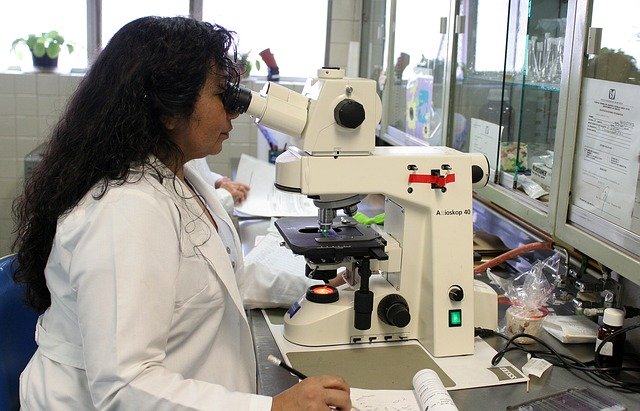
...by Dr. Gunther Maier
At the beginning of the Covid-19 pandemic, something surprising happened. All of a sudden, scientists were in high demand. In Germany, Christian Drosten, Hendrik Streek and others became public figures. Anthony Fauci in the USA emerged as the thoughtful and cautious counterpoint to the country’s president. Anders Tegnell in Sweden and Patrick Vallance in the UK suggested somewhat different strategies for their respective countries. The UK later reversed this course, partly due to a study by Neil Ferguson, a mathematical biologist from Imperial College London.
In Austria, the work of experts like Niki Popper, Martin Sprenger and various colleagues from the Medical University in Vienna led to interviews on radio and TV as well as to newspaper articles. Politicians established taskforces and advisory boards and not only invited scientists into these committees but also referred to those when making, explaining, or justifying their decisions. Scientists were in high demand; and some of them obviously enjoyed the sudden attentiveness.
In the meantime the tide has turned. As it turned out, politicians did not follow the suggestions of their advisors; at least not without a special twist contributed by their spin-doctors. Some scientists like Austria’s Martin Sprenger resigned from their advisor roles. Others got into the line of fire of the popular press. In the UK, the Newspaper The Telegraph headlined that “Neil Ferguson's Imperial model could be the most devastating software mistake of all time”. Germany’s Bild Zeitung launched a campaign against Christian Drosten and claimed that one of his studies was seriously flawed. Basis for their reporting was the critique voiced by some statisticians concerning the statistical method applied by Drosten. Other scientists got involved and argued that such discussions are an essential part of the research process. The press, however, turned the debate into a fight among scientists suggesting between the lines that vain professors are battling over fame and research money.
What can we make of all that? What lessons can we learn? Should we as scientists stay away from politics and lock ourselves up in our universities? Or should we go into politics to make the right decisions? Should we, maybe, even join forces, stop arguing, and march together for the benefit of society?
The role of scientists and the role of politicians
The roles of scientists and of politicians differ fundamentally in our societies. Scientists apply reason and doubt; politicians make decisions. It is the task of scientists to check, double check and cross check the data and evidence they collect. They formulate hypotheses in order to falsify them. They separate evidence from believes, common knowledge, stereotypes, and such. Doubt is the daily business of the scientists. They have to look for alternative explanations, more adequate methods, unobserved influences in their own research as well as in that of others. Scientists are required to make objective decisions in their research; to filter out their personal preferences and believes. The advice scientists can give is usually conditional – if this then that –, depends of context and is subject to a wide range of influences.
Politicians, on the other hand, have to make decisions and sometimes they have to make them fast. In a democracy, they also were elected to represent people’s values and believes. While scientists have to abstract from values and believes, politicians are required to represent them. Their constituency has to be given the feeling that the politicians decided in their best interest and to their benefit. In politics, it is not only what decision is made that counts. Equally important is how it was made and how it is communicated.
When science and policy are on opposing ends of the spectrum, why do they get involved at all in cases like the Covid-19 crisis? The answer is that they complement each other. Especially when one tries to implement what is called “evidence based policy”. Scientists provide the scientific evidence for politicians to make better decisions. However, evidence based policy cannot just rely on one scientist. Science is characterized by a strong division of labor and by specialization. Therefore, evidence based policy needs the input from various researchers from different disciplines. It is the task of the politician then, based on values and believes, to integrate these contributions from specialists into a coherent policy.
The important conclusion for the scientists is to stay on their side of the fence and to do their job well. Their job is to say, what is the evidence, how weak or strong is this evidence, under what conditions does it hold or not. It is not the job of the scientist to make policy decisions or to suggest specific action to the politician. The closest the scientist should get to making decisions is the evaluation of different policy options. In that case, the scientist tells the politician “If you implement policy option A, B, or C, the consequences – in my narrow field of expertise – would be such and such”. It is still up to the politician to weight these advices from the different disciplines and to draw her own conclusions.
Should we stay away from politics?
Obviously, this division of labor between science and policy is tedious and potentially frustrating for scientists. “I give them my best advice and they just ignore it and decide differently” is an often-heard complaint. Consequently, many scientists stay away from politics and policy advice. In my view, this is a big mistake.
We need to keep in mind that politicians have to make decisions. If they do not get the evidence for their decisions from science, they will solicit it from somewhere else or decide without any evidence basis. Scientists need to make their research results available to policy makers as well as to the public. Much more than today, they need to become part of the public debate and provide their knowledge and insights. In many cases, knowledge and insights resulted from public funding anyways.
It is not sufficient to criticize policy makers for missing or failed policies after the fact. From society’s point of view, “I knew that from the very beginning” is not acceptable. “No one asks me” is a cheap excuse. Scientists need to actively communicate the result of their research to policy makers and to the public. When they do so, however, they have to stick to the criteria of science and stay on their side of the fence. Of course, this communication is not just a task for the individual scientist. It needs the support of universities and other research institutions, encouragement by funding agencies, capable science journalists and responsible media. Few of that is available right now. It needs to be built up and developed. Obviously, there is a lot of work to do.
Post scriptum: The fighting scientists
As I have already argued above, the fact that scientists often express different views and that they criticize each other’s work is not a deficit of science, but actually one of its major strengths. The scientific discourse is the mechanism that advances science. It challenges established views and opens opportunities for better understanding.

...by Dr. Gunther Maier
End of May 2020, two and a half months into the Covid-19 crisis here in Austria, it is time to look back and see what we can learn from it. In particular, what can we learn from the Covid-19 crisis for the much more substantial problem we are facing: Climate Change. While the Covid-19 crisis was triggered by a tiny virus getting out of hands, climate change is related to the way we all live, work and organize this world. But, let us go step by step.
1. The outbreak
The outbreak of the Covid-19 crisis clearly showed the risk of exponential growth. From March 1st to March 13th, the number of people infected increased exponentially by in average 34.8% per day. Had this growth continued in Austria, the virus would have run out of population by April 14th. Most likely, the health care system would have collapsed one or two weeks earlier.
Of course, even without the lockdown the number of infections would not have grown that strongly that long. The virus would have had increasing problems finding people to infect. More and more would be either immune or dead. But, we do not know at what percentage of infections the pandemic would have levelled off. What we do know is that a virus works like a machine: it multiplies in a host, spreads and infects others when it gets the opportunity.
What does that tell us for climate change? Two things: First, exponential growth is always explosive; irrespective how high the (positive) rate of growth is. When any resources are limited, they will be exhausted at some point. Some regions in Italy, Spain, and France experienced this in the Covid-19 crisis when they ran out of hospital capacity. Second, natural processes – and the spreading of a virus is just a natural process – roll on once they have started. Some of them, like a pandemic roll fast, others, like the melting of glaciers and polar ice caps roll slowly – at least in human dimensions.
2. The lockdown
Despite of the dramatic growth in the number of infections, when the lockdown was imposed on March 13th many argued that it is too drastic, premature, not adequate: all we had in the statistics on that day was 504 infections and one confirmed death. Does that justify sending people in isolation and the economy in a deep recession? This is a political question and we cannot answer that here. But, what we could observe is a change in perception during the following weeks when the numbers of infections continued to grow and more and more deaths were reported. Maybe the lockdown does not work? Maybe it is not strict enough? Maybe some folks do not obey the regulations?
Behind this was a simple feature of the virus: it takes about two weeks for infected people to show symptoms. The people we observed as infected on March 13th have collected the virus already end of February. Or, said differently, the number of people actually infected with the virus is much larger than the numbers show. And, during the following two weeks, there is nothing one can do to avoid these infections.
Obviously, it was quite difficult for the public to understand that there is a delay between infection and the outbreak of Covid-19. As humans, we expect to see immediate reactions to our activities. As Psychology knows, it is quite difficult for us to cope with such delays. In the Covid-19 crisis, it was just two weeks. In the case of climate change, we have to cope with delays of decades and even centuries. In comparison, how much more difficult is it for our brains to comprehend the link between action and reaction in that case.
The periods before and after the lockdown were also difficult for politicians. First, there was pressure for less, then for more action. In the case of Covid-19 they only had to wait a week or two to find confirmation for their actions. With the much longer delays in the case of climate change, policy makers will need a lot more commitment and endurance to keep necessary restrictive measures in place.
3. The restart
At the core of a pandemic is a process that economists call “externality”: the unintended transmission of something – in this case a virus – from one person to the next. The decision I take, e.g., whether to be careful or careless, may have very different implications for others. They may or may not become infected, fall ill, and even die.
Neither economics as a social science discipline nor we as humans are very good in handling externalities. Economics largely ignores them and assumes that people pursue just their self-interest. In the crisis, we as individuals may have the best intentions to cooperate, support each other and act in the common interest. The Covid-19 crisis seems to shows, however, that this does not last long.
Now, as the country is in the process of rebooting, we also see a race toward the individual advantage. Every sector of the economy that is strong enough to make its voice heard requests financial support. More and more people complain about face masks, a measure that helps protect others from health-externalities I may impose on them. “Why do I have to endure the nuisance of wearing a mask, when just others may benefit from that?” seems to be the underlying rationale. Once a vaccine becomes available, many of those fellow citizens may resist being vaccinated.
As it seems, we are unable to take into account externalities even over a few months. Much more challenging are the externalities of climate change. On the one hand, it is not only our immediate neighborhood that we may “infect”, but the globe as a whole. On the other hand, the incubation period is not just two weeks, but years or decades. The above-mentioned rationale applies even more in this case.
4. Resume
The Covid-19 pandemic is a severe health problem on a global scale. Compared to Climate Change, however, it is short term, easy to detect and easy to combat. However, even there we could see severe deficits and difficulties in policymaking and governance. With this set of instruments, how will we be able to combat Climate Change?
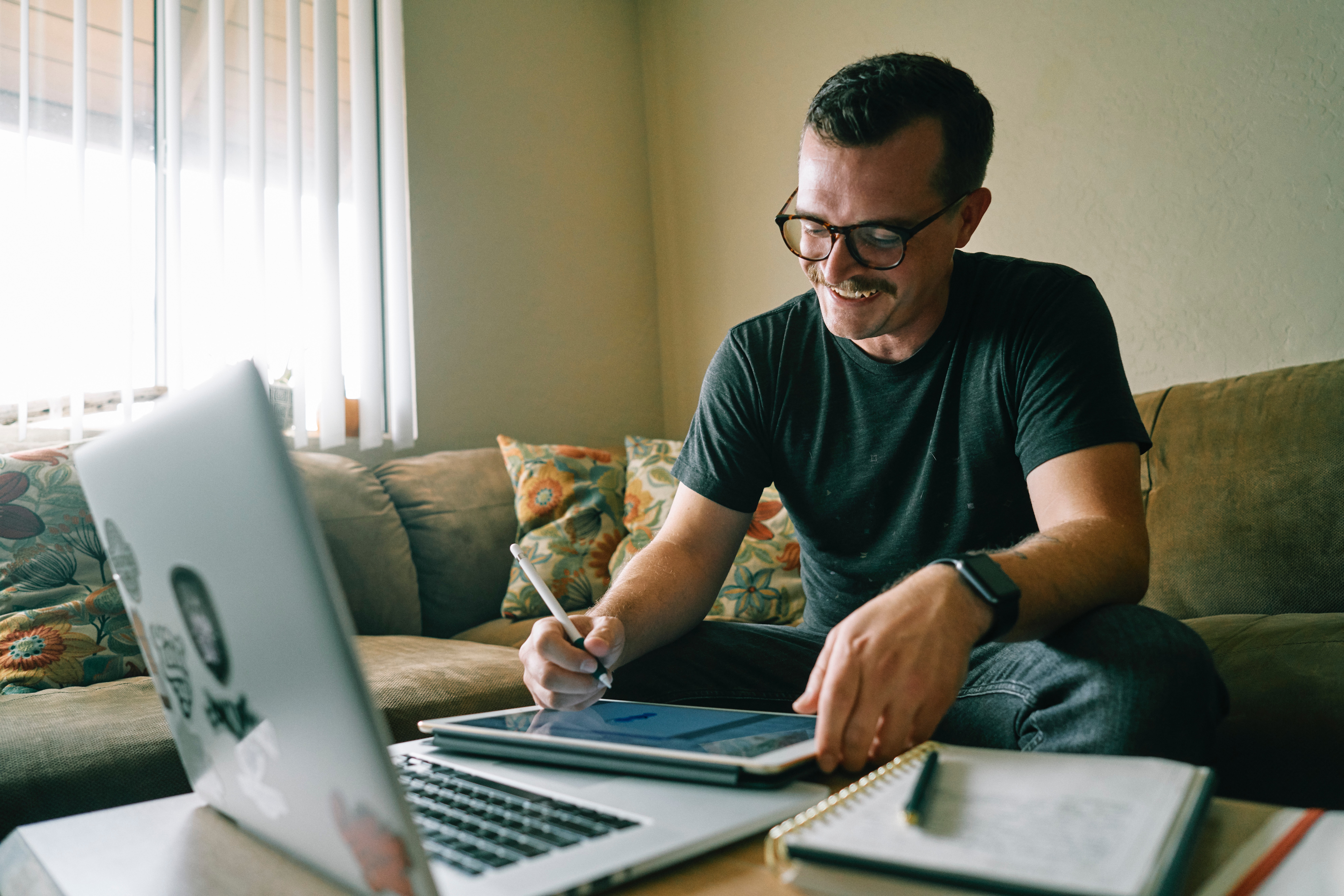
Today is the International Day of Happiness. Professor Ivo Ponocny from MU Department of Sustainability, Governance, and Methods is explaining that while there are things to worry about, we should choose to take positive actions that support our wellbeing and help others do the same:
“Today, March 20th, is marked as the International Day of Happiness by the United Nations. In times of the corona pandemic, we wouldn’t care too much. There are other things to bother about, we may think. And that’s true – but just to a certain extent. Isolated at home, some get lonely, while others feel imprisoned. Living closely together can raise conflicts, causing an already noticeable increase in domestic violence. Many of us, in our academic bubble, safely send pictures around, showing ourselves in our home office, in jogging pants, surrounded by cute cats. In contrast, other people have to work harder than ever facing the risk of infection. People lacking relaxation space are driven away from public places, and countless people fear for their economic survival.
Fortunately for many of us, our individual risk of dying is still marginal. We will not even run out of toilet paper. Yes, there are things to worry about. Absolutely true. The tricky thing with fears, however, is that they tend to generalize, shift to other subjects or change into aggression. We should not stigmatize certain groups of people as walking life threats. (Well, particularly in Austria we should not cast the first stone.) But we shall support measures for those who are exposed to real danger.
A general recommendation for keeping up one’s wellbeing is to remember and make use of the good things in life. Even in times of crisis, a lot of things are left which please us and which help us get through our days. Well, we would not forget about all the electronic gadgets and entertainment options, anyway, but we should also be aware of our families and friends. Even if we are separated, we are still only a few mouse clicks or commands to a virtual assistant away from them. The time we save by not being as mobile as usual can be used to enjoy the things for which we have never found time before: to read what we have always wanted to read, to call the people we have wanted to call for so long time, to learn the things we have always wanted to learn – a language, a software, whatever new skill. That’s up to us. But make use of the time, either just to please yourself, or as an investment for later.
Time is always a gift, a resource, even if provided by corona. It is valuable. Don’t waste it.
And stay safe and healthy.”
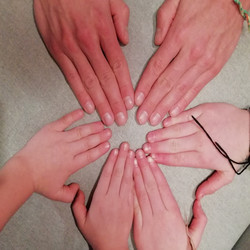
Celebrating the UN Social Justice Day
Every year on February 20th, the United Nations mark a “Social Justice Day” and announce a specific topic. For the current year, it is “Closing the Inequalities Gap to Achieve Social Justice” which merges well with the 10th Sustainable Development Goal, “Reducing Inequalities within and among countries,” emphasizing differences in opportunity, income and power. See what MU faculty members of our department think about these goals.
Social justice as a political and philosophical concept refers to equality among people along various dimensions. It originally claims that people should have equal access to wealth, health, well-being, justice, etc. Thus, it is quite often seen as a concept advocating a push for policy reform like in healthcare or immigration. Understood like that, it aims to remedy potential biases toward certain demographic groups.
The idea of justice plays a real role in how – and how well – people live, which depends on different components, amongst others geographical disparities, institutional barriers etc. As a normative theory, social justice theory as any other normative theory includes and excludes information, and those elements excluded cannot influence the value judgements anymore, which results in constraints. Nevertheless, it is important from a societal point of view to provide conditions that prevent inequalities in order to safeguard long-term development without overexploiting resources, as learned from the case of Easter Island.
Often overlooked, but potentially the biggest social injustice and biggest example of inequality of our current global society, are the unequal shares of responsibility for global environmental destruction and the unequal exposure to their consequences. This is most evidently illustrated with respect to carbon dioxide emissions, both in terms of cumulative historic emissions (animation), as well as in terms of actual emissions today (Guardian). The richest 10% of the planet are responsible for around half of total lifestyle CO2 emissions. In terms of cumulative historic emissions since 1870 the picture is also striking: Striving for a maximum of 1,5 degrees temperature change, then, according to ‘the global carbon project’, only 9% of the total carbon budget are left. The U.S. and EU28 have used around 45% of that Budget, while at the same time only representing around 15% of the global population today. Some authors are showing that 100 companies (and therefor their CEO’s) could be made responsible for 71% of current greenhouse gas emissions.
On the other hand, taking sea-level rise and extreme weather events as an indicator for the negative consequences of climate change, some of the world’s poorest regions suffer the most. Among those are Puerto Rico, Honduras, Myanmar, Haiti, the Philippines, Nicaragua, Bangladesh and Pakistan. As a natural consequence, many poor regions now demand their share of the global riches stemming from fossil fuels while demanding rich nations curb their emissions. However, the numbers above make clear that there is no space left anymore to replicate the rich North’s outdated model.
Instead, poorer regions should lean on their experience with low-carbon life-styles to become leaders in a global transition out of the fossil fuel age. Rich countries should firstly reduce their carbon footprints as much as possible and secondly should help to unleash that enormous know-how in the global South, including dedicating resources and carbon budget to lift all people well above poverty lines. We need everybody’s engagement, but the more people need to get through the day, the less potential for creating a prosperous future for our children.
From a well-being perspective, a variety of different biological and social needs and circumstances require consideration. Justice should refer to all of them. It is tempting to believe now that we could break this down to essentially one dimension (such as money), and that gain on one dimension will compensate for loss on another: If somebody suffers from the burden of professional duties, won’t that person be paid accordingly, so that everything’s fine again? If a couple splits obligations and one earns money and the other stays at home with the family, isn’t, at the end, the achieved career progress paid off by lack of family time, and the (typically female) career restrictions by emotional gain when staying at home? So everything is fine after all, right?
Well, I do not believe in such compensations – at the end of the day, the result may well be that all parties have been cheated out of happiness: the one by working like a dog just to be a stranger within his or her own family, and the other going crazy at home for no money and no appreciation. We cannot simply replace on need fulfilment with another. We cannot compensate the lack of air to breathe with more water to drink. By the way, how much money would replace love and friends? In turn, how many friends would it take to alleviate poverty? But if different aspects do not compensate well, then the task for societies is to create fairness in many aspects, going far beyond income equality. That’s why social reporting relies on dozens of indicators. The term “opportunity” needs to be interpreted in a very broad sense.
And sometimes, compensation fails for other reasons…
We cannot simply choose some needs to the detriment of others, nor should a state do so. We cannot sell one aspect of life for the other, and economic growth cannot compensate for the destruction of the environment. The social agenda is necessarily a tough one. We need to care. And accept all these challenges.
Recently, there has been increased attention to work-time reduction policies in core countries as a way to increase wellbeing and reduce environmental degradation. A common assumption is that people could give up on some of their income, which is spent in overconsumption, in order to have more free time available for friends and family. Although this is true for a small share of the global population, 44h/week underpaid workers with unstable contracts living in the outskirts of metropolises actually wonder if they should even work extra to make ends meet. This is especially true in periphery countries where weak welfare states raise the cost of living and economic insecurity and reducing work hours and wage proportionally to spend more time with family is something unthinkable for the majority. For many workers the burden of duties is simply not compensated accordingly by income if they have less than a living wage.
--- Epilogue ---
Finally, please allow me, Christian Weismayer, to invite you to do a small step forward towards a world of social justice:
"Having a look at the following report, Closing the Gap in a Generation: Health Equity through Action on the Social Determinants of Health, published in 2008 by the Commission on Social Determinants of Health, set up by the World Health Organization (WHO) in 2005, we can see that it starts with the following sentences: 'Social justice is a matter of life and death. It affects the way people live, their consequent chance of illness, and their risk of premature death.' I’d like to address exactly this point here with my participation at the Tour de Herz 2020 invented by the organization Herz Bewegt. We collect money for children who are in need of a life-saving heart operation, but due to the absence of worldwide social justice, they cannot afford such an operation and have to die in agony. In this way I try to contribute to this year’s 2020 theme of the World Day of Social Justice, which is Closing the Inequalities Gap to Achieve Social Justice. So let’s together strive for closing one of the gaps with a small donation to my fundraising campaign and at the same time help to achieve the 4th United Nations Millennium Development Goal, namely reducing child mortality. Thank you so much in advance in the name of children living in developing countries with a lack of specialists who can perform such operations!" <Click here to donate>

Notes from a researcher in happiness - Dr Ivo Ponocny
Did you make a New Year's resolution? The chances are you did. Some researchers estimate the percentage of people making habit changing decisions in the New Year is around 50%.
But why do we put ourselves through it? After all, according to Business Insider approximately 80% of resolutions will fail by the second week of February.
You might have read how you can keep your resolutions by setting so-called smart goals. This includes creating reachable and measurable targets in a realistic time frame, evaluating your success and tracking your progress – possibly by using one of the many smartphone apps available. Others say people should be much kinder to themselves. After all, can people really change to the extent we expect ourselves to each January 1st?
Both approaches to New Year’s resolutions are valid, and self-improvement should always be encouraged – be that mental or physical. This annual behavior can actually be quite reassuring from a human perspective. Even in the face of probable failure our intention to better ourselves keeps coming back year after year. At their roots, most New Year’s resolutions are positive changes; more time for the family, more time for enjoying life, more exercising, healthier nutrition or a reduction in drinking and smoking. If with each passing year we are reminded to act a little better, then there should be no objection to that!
We all have to start somewhere, and the few resolutions that do succeed begin like all the others – with the will power to begin.
Will power - obviously this is the key to whether a resolution fails or succeeds, otherwise implementing one’s intention would not be such an undertaking. The aspect of will power which I want to emphasize is the well-known fact that humans are terrible affective forecasters. This means we struggle to picture ourselves in another emotional state. On New Year’s Eve, we are fully convinced that our solemn mood will still be present when it comes to actually implementing our noble ideas. We do not feel the daily hassles which keep us off the grand activities we strive for. With all the best intentions of the New Year coursing through us we can hardly imagine the need to simply relax after a hard day’s work, instead of going to the gym for the third time that week. Likewise in the midst of our routines, we do not have the emotional support from Auld Lang Syne or the Blue Danube waltz to remind us of our original pledge.
So if you are (like 80% of people) considering throwing in the towel on your resolutions, consider this: you have already taken the first step to making a real change. Keep showing commitment to who you want to be. Continually rethink your plans and adapt them to your daily restrictions and opportunities.

Thoughts from MU Vienna's Dr. Ivo Ponocny
World Emoji Day! Today we celebrate the humble Emoji. Fastest growing language in the UK, box office hit in the USA and literal icons of our digital age. Love them or hate them Emoji have re-shaped everyday communication for better or for worse. A few years ago we would have thought it unthinkable as a culture to translate Moby Dick into Emoji, but here we are! How I use the word ‘unthinkable’ is entirely up to you.
Created in 1999 the emoji has skyrocketed into popular use without being the subject of too many scientific debates. However, sometimes public attention has been attracted particularly when it comes to diversity – remember when they released emoji with different skin tones? More controversial is the question of whether there should be Emoji wearing headscarves or even veils! Spoiler – the answer is yes there should and we should all move on.
Interestingly enough cultural differences have not slowed the global adoption of the emoji even though for any kind of symbol the interpretation is a matter of context. There is some literature describing that the same icon can be differently interpreted in different regions of the world, such as laughing tears vs. sneezing.
A psychological perspective may be able to answer why almost all global regions have adopted the emoji so successfully. Emoji could be understood as the implementation of an old concept about communication, Watzlawick’s fourth axiom that communication has an overt explicit content (the digital one) and an analogic one known as the associative, in particular emotional content which is somehow hidden between the lines. An emoji can boost the analogic element of the content whilst compounding what is dryly and explicitly stated.
As with any language, they enable you to express yourself, and they can restrict you at the same time. It is this restriction which has also made the emoji so widespread. With a relatively limited vocabulary we have to creatively make do with the toolbox available. This means, unlike traditional language, we only have to grasp a few very basic rules, which are largely the same regardless of region. In linguistic terms the Emoji is the success Esperanto wished it was. Are we far away from seeing our first peace treaty entirely in Emoji?
Though people are working hard (on both world peace and the Emoji toolbox), there won’t be an emoji for everything you may want to express. Even if there were we you may be completely unaware of your sender’s intentions. For example, do you still know about the language of stamps? Probably not. So you might receive a letter with the stamp turned around and miss the loving message of your sender.
In ancient times when communication was at horse speed instead of light speed, people did not have Emoji, or even email but still wrote beautifully crafted letters to one another with polished sentences on an incredibly high linguistic level. Often a letter was the only contact you would have with someone for weeks, so it paid off to formulate it carefully.
Maybe the language of Emoji is a tool for bringing back emotional signals to a digital world lacking in open emotional expression. For now the Emoji is here to stay, but please remember it is not forbidden to switch to regular language and spell out your feelings

"Novelty is tempting, but don't replace the Good with the New"
...says MU Vienna's researcher in happiness Ivo Ponocny
For many the whole Christmas season builds up to the moment of giving and unwrapping presents. Unwrapping is, for most of us, an integral part of the celebration.
We wrap presents for no other reason than for the joy of unwrapping them again. If we were to ask the general public about their favorite parts of the Christmas experience, opening presents would rank even higher than owning the gifts afterwards. The pleasure curve related to most gifts drops quite quickly. The unpacking and receiving of gifts seems in most cases the most anticipated part. Why is this the case? Why do we perform this objectively pointless task each year? Science says it’s more than just tradition and triggers a fundamental part of our nature.
We are programmed to react to change. You probably can’t tell how warm it is at the moment, but you would immediately be able to detect a cool breeze coming in. When things get slightly better, we cheer up, when things don’t go our way we are disappointed – this is noticed and appraised immediately. The improvement itself is what counts, rather than to which emotional state it takes us. A classic experiment in happiness research produced a noticeable increase in life satisfaction ratings by letting participants find a small coin on a copying machine. (For those who like calculus, some even interpret happiness as the first derivative of life satisfaction, i.e. the momentary change rate).
We need novelty, and there is nothing bad in celebrating new things and relishing anticipation. But in this pursuit of constant positive change we often lose sight of the implications or our choices. Animal sanctuaries for example, know only too well how soon we can come become bored or overwhelmed with the responsibility of owning a pet once the novelty has worn off.
In general, science claims that human beings are terrible affective forecasters, we cannot reliably predict how we will feel in another emotional state. The amount of satisfaction from having something is difficult to predict whilst we are craving for that thing. Have you ever seen the results of buying food whilst hungry?
On the other hand, novelty is good for us. We need to be stimulated, we need innovation and the magic of new things. Never stop bringing novelty into your life. I love the moment so much when some of our international students at MU experience snow for the first time – they laugh, they shout, they take photos, they throw snowballs and build snowmen like little kids. They are even excited about the frostiness on their bare hands and happily expose themselves to the season so many people hate. Long after the snow has melted the memory remains.
Do not mistake the pleasure of novelty for the lasting experience. Do not replace the good with the new. Otherwise you will get caught in an everlasting cycle of greed, disappointment and always wanting more. You will also be wasting our planet’s precious resources in the process.
This Holiday season enjoy what people give to you, as well as what you give to others. Experience the new and the good in balance. This is the real challenge.

"It can be the busiest time of year, but if you try too hard to please others you could miss the whole point"
...by Dr. Ivo Ponocny
Some love it, some hate it. Is Christmas the highlight of the year, or rather the perfect time for a long-distance trip as far away from the seasonal madness as possible?
Surprisingly, serious science into happiness hasn‘t dealt too much with this issue, with just a few studies producing diverging results. The most recent (Mutz, 2016, based on the European Social Survey) sheds a rather disillusioning light on Christmas time, showing a decrease in emotional happiness, particularly for people with materialist or consumerist views on the festivities (as opposed to those focusing on their family or religious aspects).
What we know for sure is the time before and after Christmas is high season for depression, psychological crisis within families, and interventions. However, on the positive side it is the time for loved ones, receiving presents and, last but not least, giving. Many experiments show that spending on others can be more beneficial for your happiness than spending the same amount of money on yourself.
Much about Christmas is symbolic, what we do and what we experience gains its meaning from our individual perception. Symbols can be interpreted in various ways, for example, you may take all the elements and rituals of Christmas – though commercialized – as indicators of love, peace and the pursuit of inner harmony and a better world. You may on the other hand consider them as disgusting excesses of a superficial, untruthful societal climate of hypocrisy. It is also possible to see Christmas as something in between or a mix of those two extremes.
It is tempting to conclude that Christmas is what you make of it. It would be easy to advise you to focus on the good aspects and be happy with it. Conserve the magic you experienced as a child, and simply tune out what you dislike. After all, there’s no need to play the Grinch!
But it isn‘t as easy as that. Some may have learned as a child that Christmas is a time of quarreling, stress, and tension. As an adult, the sight of decorations and the sound of carols could trigger negative memories, anxiety or unwanted feelings.
Things start getting difficult when the ghosts of two such different Christmas pasts need to find a way to celebrate together. At this time of goodwill, it’s important to negotiate empathically and carefully, with an understanding that both parties have good reasons to feel as they do. Stay flexible – not every tradition is worth insisting upon.
Don’t forget, much of the Christmas hassle comes from pleasing other people. An idyllic Christmas can easily turn into a blizzard of obligations. If it begins to look like an event you just provide for other people, then one important person was forgotten: you. Your wishes are no less important than the ones of others.
Whatever type you are, and however you celebrate this time: may your Holidays be full of real, true and sustainable joy. That‘s the one gift you won’t pack away as soon as the holidays are over.
Mutz, M. (2016). Christmas and subjective well-being: A research note. Applied Research in Quality of Life, 11(4), 1341-1356.




